- The Byzantine Episcopal Influence on the History of Side, Pamphylia
- Exploring Side, Pamphylia Hidden Byzantine Monuments
- The Lost Metropolis Episcopal Palace in Side, Pamphylia
- Discovering the Repurposed Chapel in Side Open Air Museum
- The Hidden Mosaics among the Side Market Shops – Part one
- The Hidden Mosaics among the Side Market Shops – Part Two
- The Hidden Mosaics among the Side Manavgat Shops – Part 3
- Hidden Things From Side’s Fountain to Grand Theater
- Hidden Crosses in the Side Archeology Museum
- Side’s Fascinating Basilica near Apollo Temple
- Analyzing the 12 churches and chapels of Side, Pamphylia
- Analyzing the Synagogue in Side, Pamphylia
The road from the Side, Pamphylia Central Fountain to the Amphitheater, provides a few hidden crosses that show the Christian influence of this ancient city. Do they give evidence of a Basilica in this area?
My walking tour map of Side Ancient City:
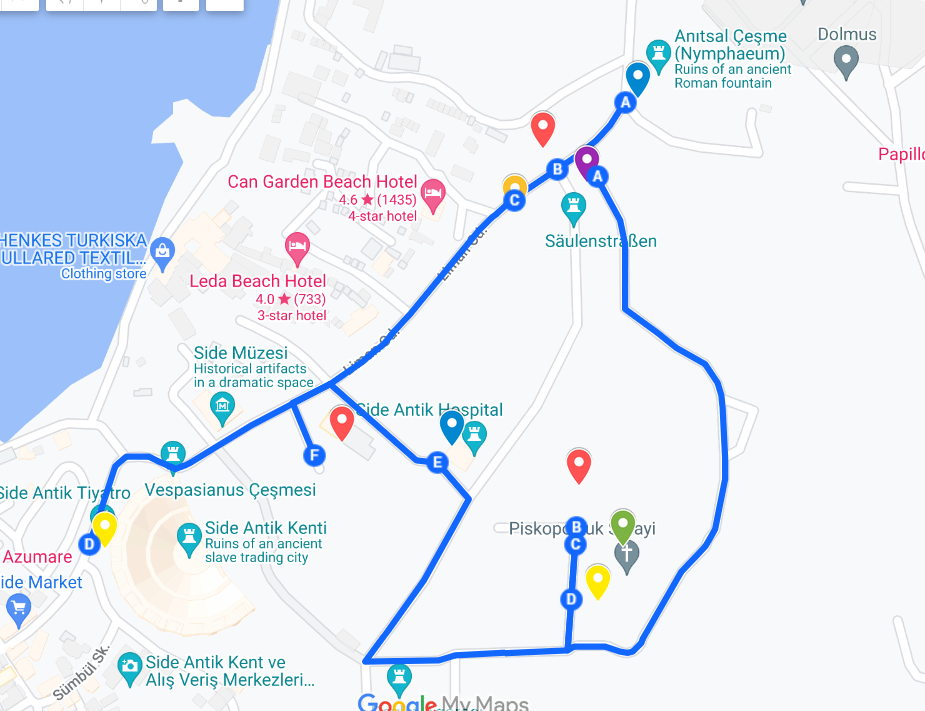
Side Monumental Fountain
The Monumental Fountain was formerly the entrance to the ancient Side, and historians state that this area was built in the second century when the Side Aqueduct was built.[1]a historic fountain dates back to the second century B.C. The Archeology authorities continue to renovate the 50-meter-long and three-story high fountains so that eventually the water will flow again to the fountains.[2]https://www.dailysabah.com/turkiye/water-is-set-to-flow-again-from-the-historic-fountain-in-side-turkiye/news
The “Nymphaion of Side” “most likely portrayed Nymphs, female representatives of nature and became a central place to gather. This civic area was used for community events, especially wedding ceremonies.
Mosaics can be observed near the current entry road within the fenced gate. These reflect many cross-like designs and even an apse-like shape that sits perpendicular to the main structure. When Christianity became the chosen faith of the Byzantine emperors, many civic locations added chapels. In the Side amphitheater, two chapels sit on the lower corners, and I wonder if this was not a similar endeavor, placing a small chapel at the city’s entrance.
Walking Street Hidden Crosses
There are multiple crosses between the Side Fountain and the Amphitheater, displayed either in marble or as a mosaic. We saw multiple crosses in the fountain complex, so we are now heading toward the new city gates on the public walkway.
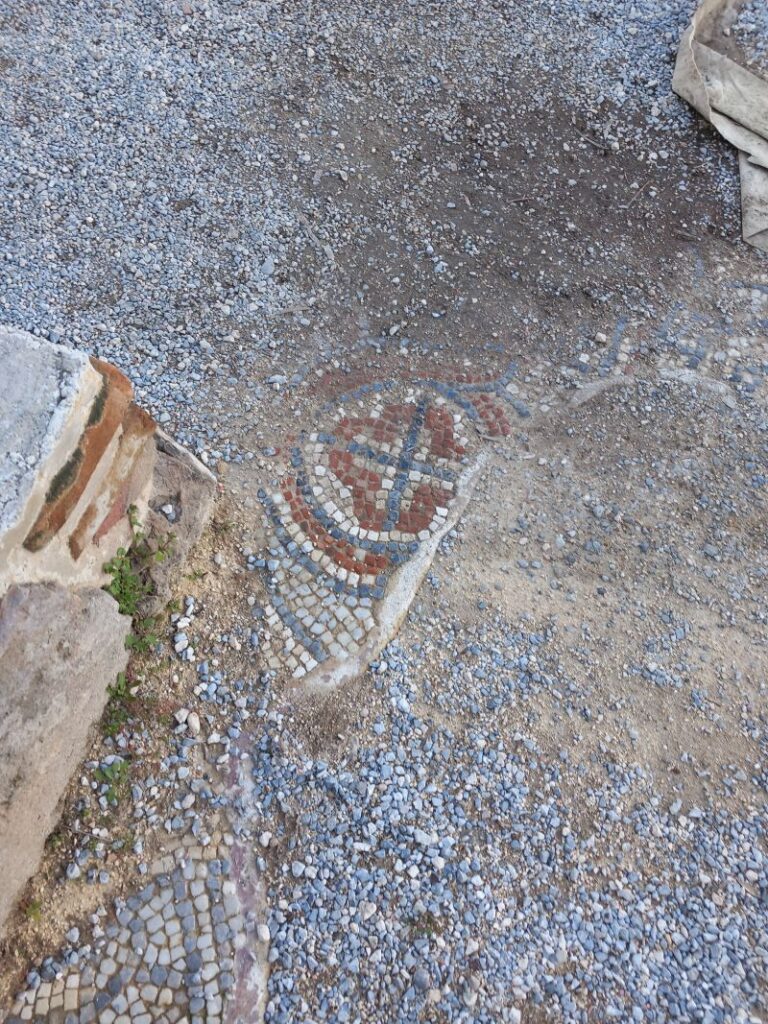
This mosaic remains in the public area from the fountain and walking on the right side of the road. Formerly, more mosaics sat on this walkway, but this one remains. After some time, it will most likely disappear (this is a Jan. 2025 picture). Most likely, this directs us to the Chapel found on this street by the archaeologist Mansel, which had an atrium and a fresco apse up to the 20th century.
Two marble cross-capitals sit within the shop area near the colonnade side of the road (walking toward the Main Gate on the left). These differ from the re-purposed church near here within the Open Air Museum. In light of that, it is possibly connected to the church that is labeled “the chapel on the Fountain/Theater Road.”.
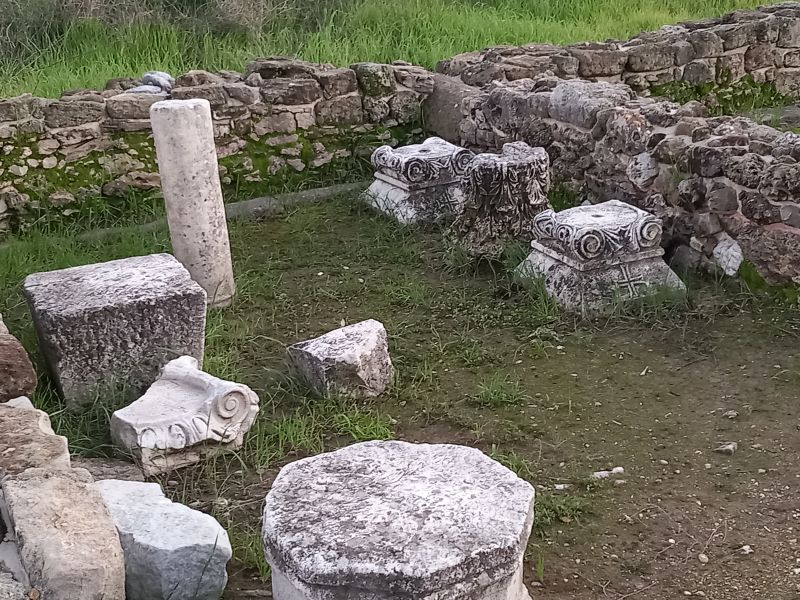
The Archeology map of Arif Müfid Mansel, who oversaw the digs on the Ancient Side from 1947 to 1974, shows a spot on this roadway that he labeled a possible Byzantine sacred place.
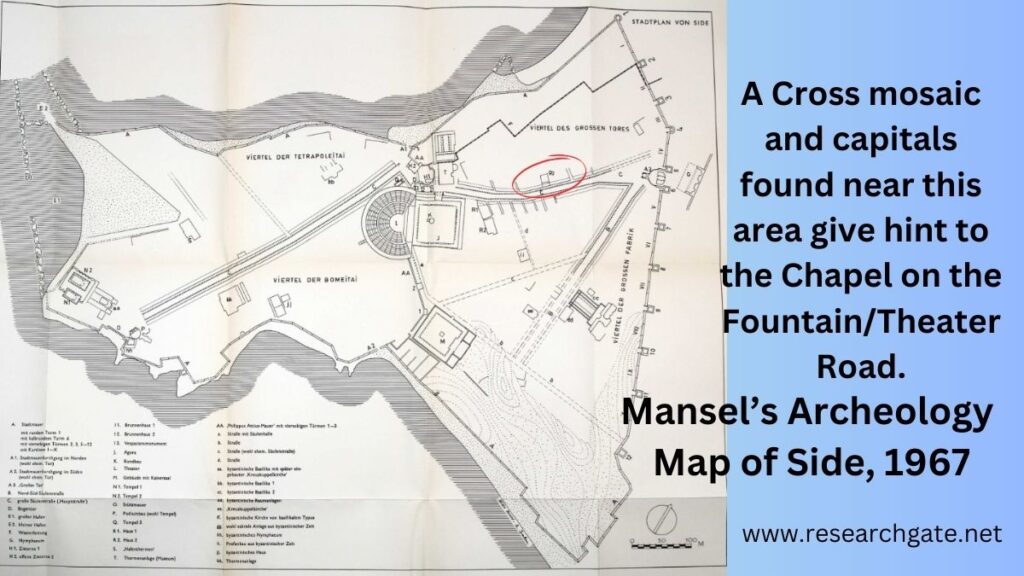
With our discoveries, we can make a list of the churches and chapels of Side Pamphylia. This list gives evidence of how influential the Episcopal Metropolitan of the Byzantine church was.
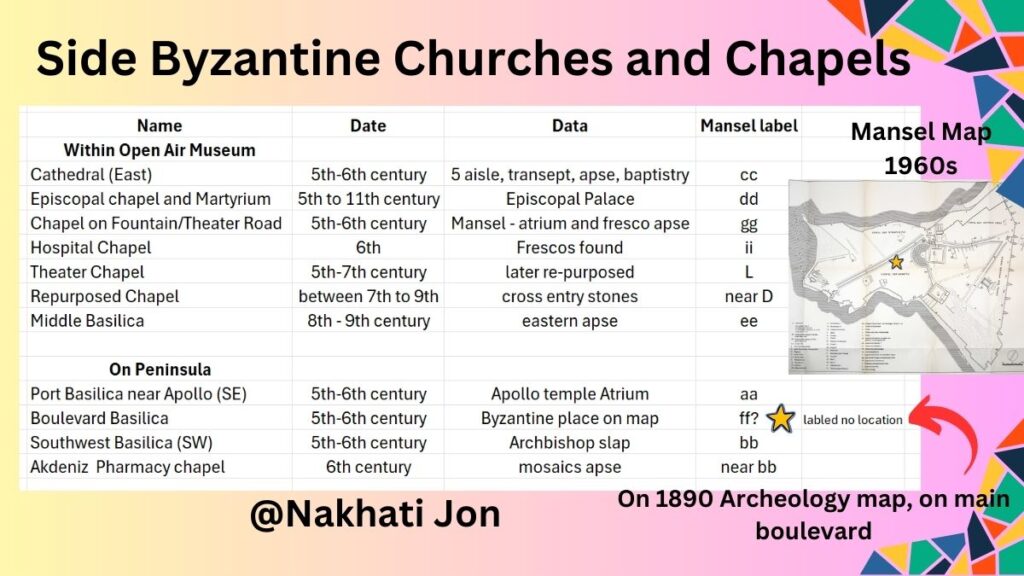
The next stop for us is the Museum near the Theater.
My other explorations:

Leave a Reply